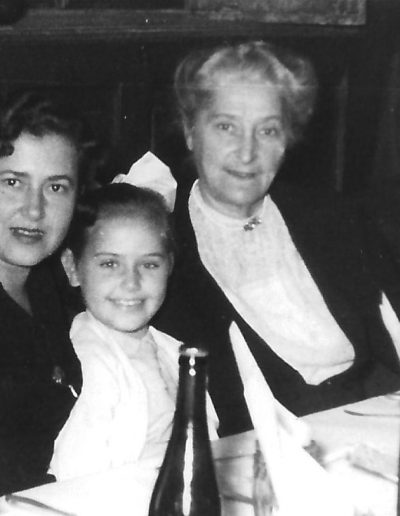Drechsler Maximilian Miksa
October 23, 1883, Tabajd village, Fejer county, Hungary - 1970, Timisoara, RomaniaRabbi and author of Bible studies
Mordechai Maximilian Miksa ben Rabi Iehuda Drechsler was a neolog rabbi and author of works on the history of Judaism.
Between 1903 and 1908 he was a student at the Rabbinical Seminary in Budapest. In 1906, he had his doctoral dissertation in philosophy, published in Budapest under the title Az aszketizmus állása a zsidó vallásos irodalomban Maimuniig (The position of asceticism in Jewish religious literature up to Maimonides). In 1909 he graduated as a rabbi. For a short time he was a rabbi in Szarvas, Hungary, then in 1909 he started his activity as a neolog rabbi in Timisoara, which was then part of the Austro-Hungarian Monarchy.
About the enthronement ceremony of Rabbi Dr. Maximilian Drechsler in Timişoara, Sunday, August 22, 1909, we find out from the newspaper Temesvarer Zeitung. Temesvarer Zeitung. See below.
He completed his training at Oxford and Jewish College in London, where he was then invited to give a series of lectures on the Talmud. He published a work on the philosophical and religious thinking of Rabbi Yehuda ha-Levi (Közlemények II.), and in 1932, a work in Hebrew on Rabbi Isak ben Haim Hakohen (1932, Seini, Maramures). His articles have been published in Magyar Zsidó Almanach, Múlt és Jövő, Temesvári Hírlap and Neue Zeit. In 1935-1936, together with Dr. Emeric (Imre) Naschitz Imre, he wrote for the neolog community Zsidó Évkönyv (The Jewish Yearbook), with articles on religion, science and literature.
The neologism, a reformist movement that emerged in 1868 in Hungary, introduced reforms that mitigated the rigor of the liturgical rite and traditional customs. A follower of these reforms, Rabbi Drechsler was known for his liberal and tolerant spirit, for his impeccable intellectual attire, for his humanity and bonhomie. The rabbi and his wife, Esther, with a university degree and a doctorate, had a highly respected position in the Jewish community and in the city.
Sources
- Baruch Tercatin, Lucian-Zeev Herșcovici, Rabbinic presences in the Romanian perimeter, Hasefer Publishing House, Bucharest, 2008
- Magyar Zsido Lexikon, 1929, 1929
http://mek.niif.hu/04000/04093/html/szocikk/11106.htm - Zsikipedia
http://zsikipedia.hu/index.php/Drexler_Miksa - wikipedia.hu Izraelita irodalom
http://hu.wikipedia.org/wiki/Izraelita_irodalom_Erdlyben - Török Petra, Zsido könyvkiadas 1945 elött Zsido könyvkiadas 1945 elött
http://www.szombat.org/archivum/torok-petra-zsido-konyvkiadas-1945-elott-1352774033
The enthronement of Rabbi Dr. Max Drechsler
The news published in the Temesvarer Zeitung about the enthronement ceremony of Rabbi Dr. Max Drechsler in the position of first rabbi of the Jewish Community of the Citadel, Timisoara, allows us a perspective on the significance of the community at the beginning of the century.
According to the program presented in the newspaper, the rabbi's reception took place as follows. A delegation, led by Alexander Kohn, greeted him at Jimbolia and accompanied him by train to Timisoara, where they all arrived at 14:51. At Iosefin Station, Dr. Heinrich Keppich welcomed him in the first-class waiting room and greeted him on behalf of the community. A protocol commission of 50 people, which had met at the Community House (Elizabeth Court, Gheorghe Lazăr Street no. 5) at 2 pm, went to the train station to wait for him in front of the station. The whole procession in carriages that had been ordered in time accompanied him on the road to the Hungaria Hotel, on the corner of Eugeniu de Savoya Street and Augustin Pacha (current names). It was the oldest and most elegant hotel in the city at the time, where Prince Alexander John Cuza, also spent the night on his way to exile.
After a short stop at the hotel, Alexander Kohn, at the head of a delegation, led the 26-year-old rabbi to the Citadel Synagogue, where he was greeted at the entrance by Salomon von Sternthal, the president of the Community. Public access to the synagogue was possible only to those in possession of an entrance ticket.
In the evening, at 20:00, a banquet was held in honor of the first rabbi in the Redoutensaal, inside the Franz-Joseph theater, which was attended by 200 people.
Only a large and prosperous community, aware of its value and power, was able to hold a welcoming and enthronement ceremony of such magnitude. This phenomenon was possible in an order such as the Austro-Hungarian Monarchy.
Getta Neumann
Thanks to the museologist Cristian-Oliviu Gaidos for the source of the article from „Temesvarer Zeitung‟.


